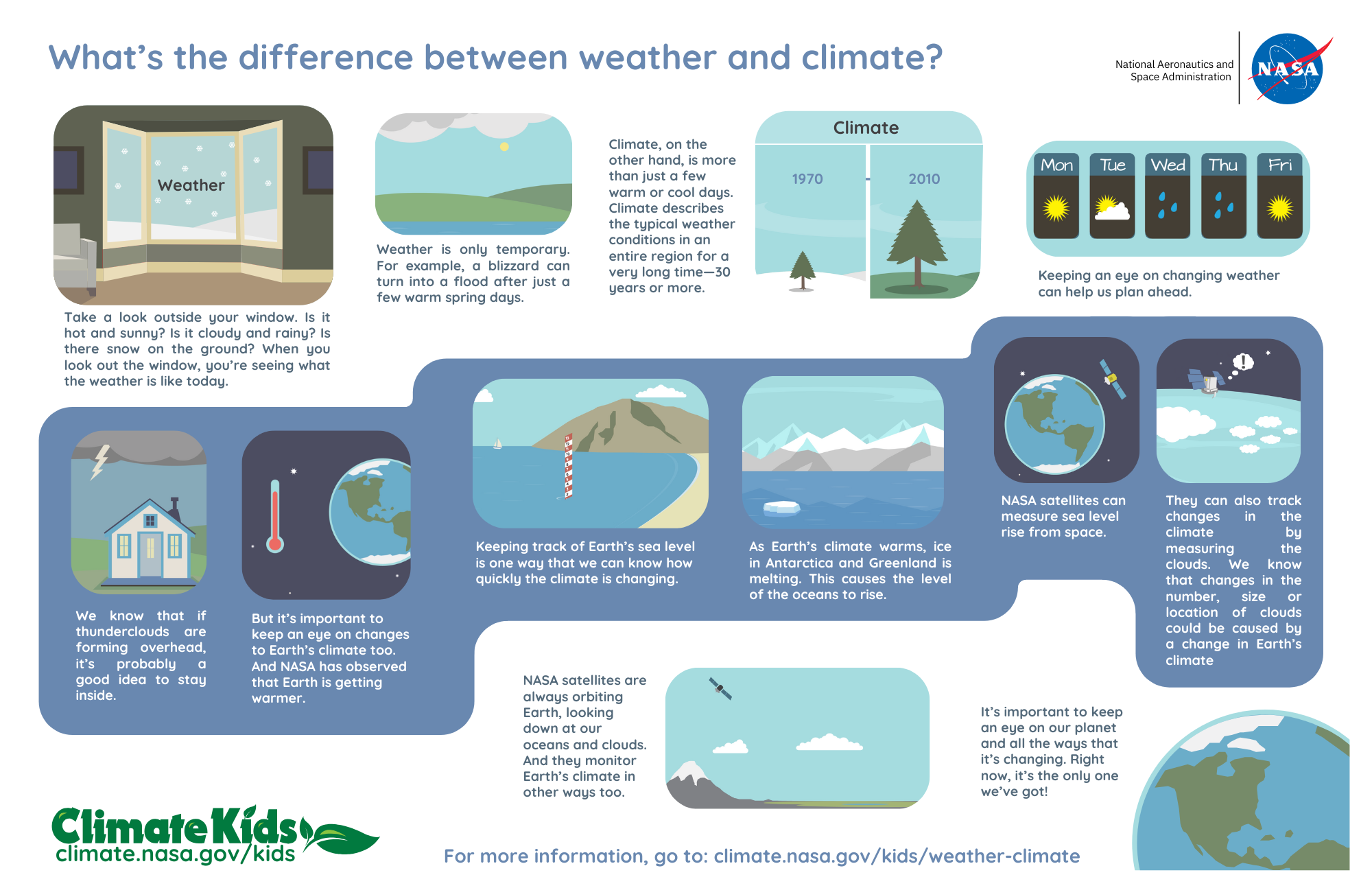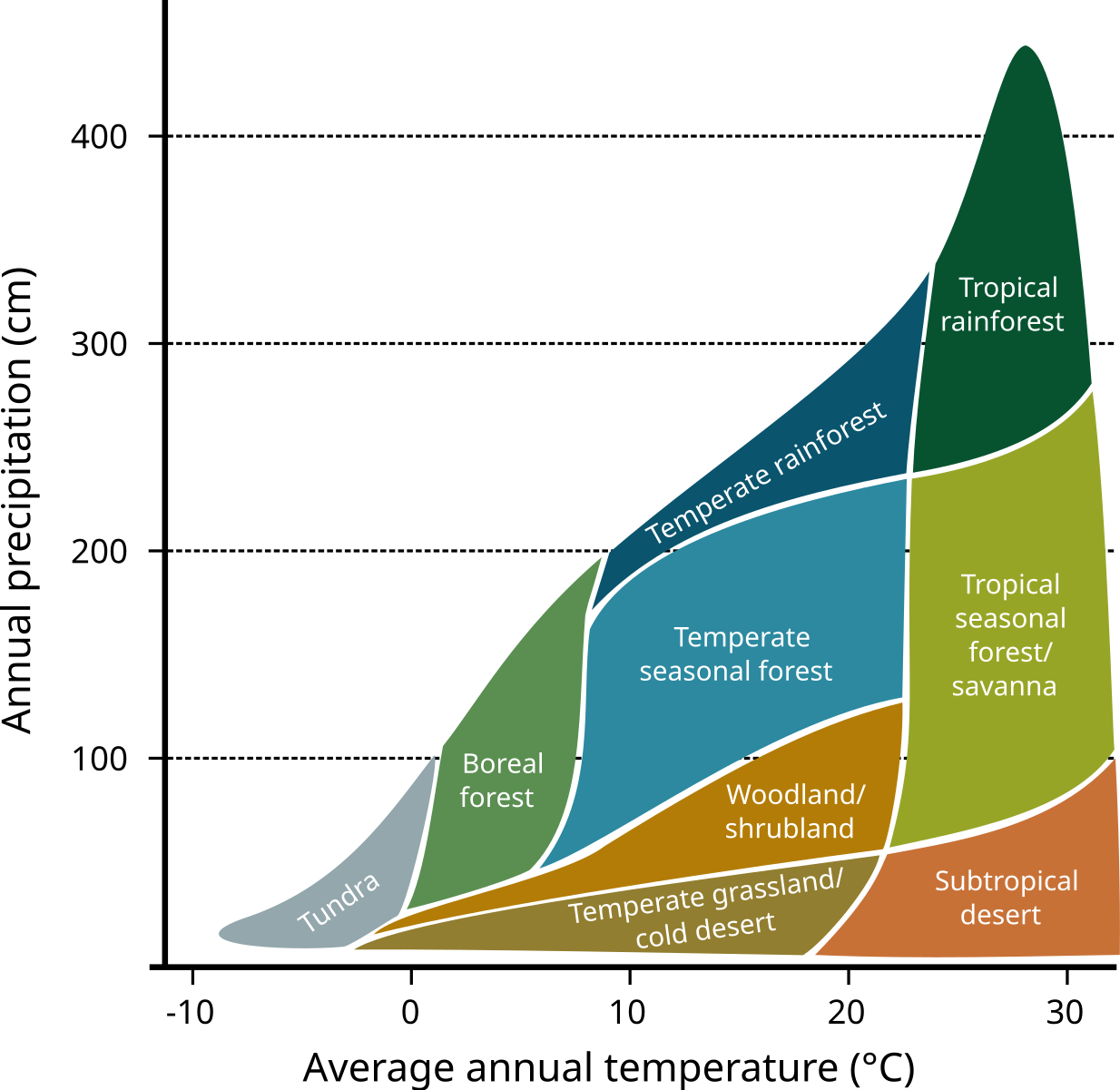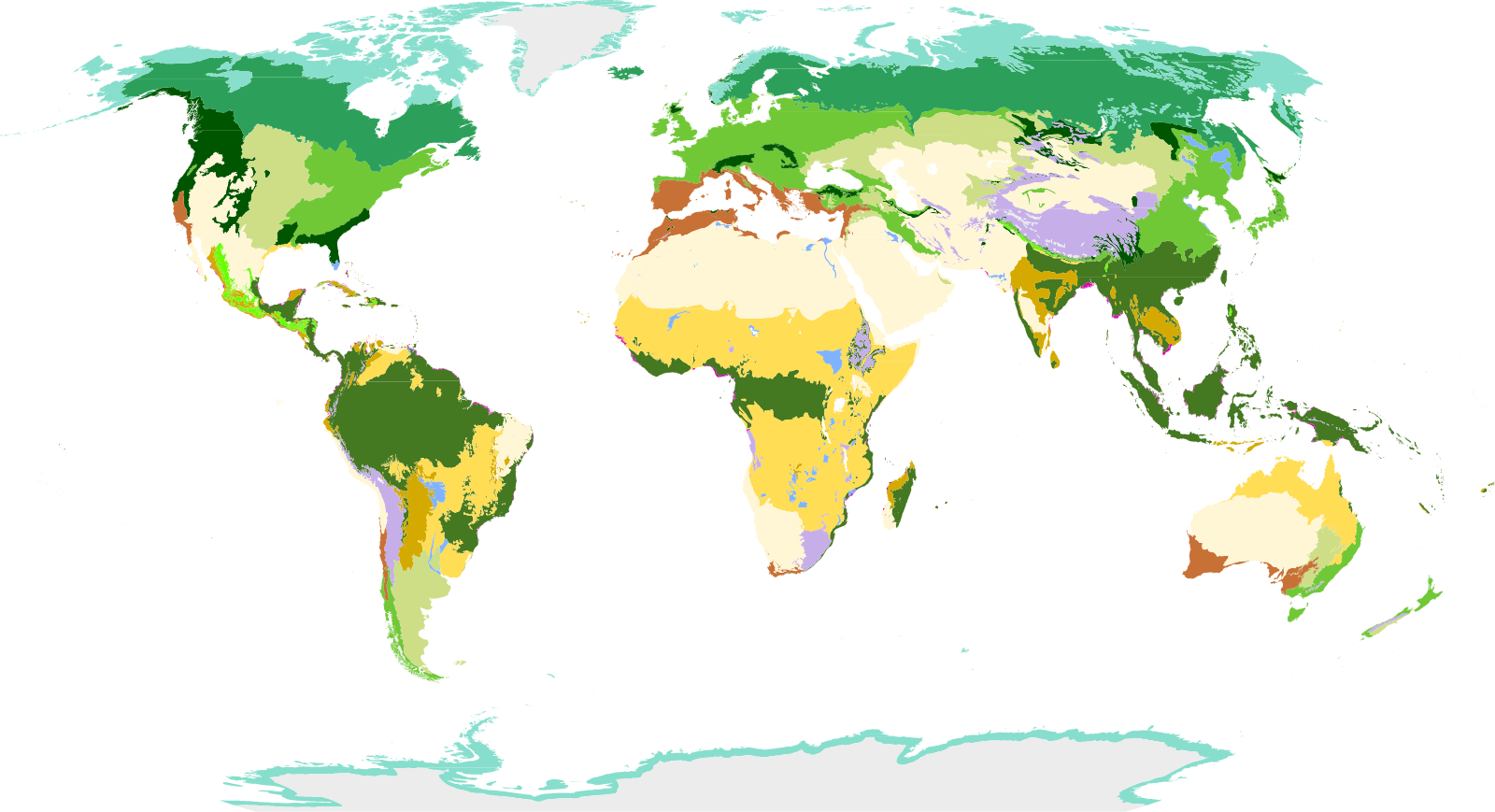IB Syllabus focus:
‘Weather is short-term conditions; climate is ~30-year averages. Temperature, precipitation, and insolation drive terrestrial biome distribution; characteristic ecosystems develop under given climates.’
Understanding the differences between weather and climate is fundamental in ecology, as these factors directly shape the distribution of biomes and determine global ecosystem patterns.
Weather vs Climate
Defining Weather
Weather refers to short-term atmospheric conditions in a specific place at a specific time. It includes measurable variables such as temperature, precipitation, humidity, wind speed, and air pressure. Weather conditions may change within minutes, hours, or days, making it highly variable and localised.
Weather: The short-term atmospheric conditions (temperature, precipitation, humidity, wind, and pressure) of a given area, varying daily or even hourly.
Weather is therefore what people experience on a daily basis — for example, a thunderstorm in the afternoon or a clear, sunny morning.

Poster comparing weather (short-term atmospheric conditions) and climate (long-term averages, typically ≥30 years), with labelled examples and timescale emphasis. The poster includes brief NASA GPM context not required by the syllabus, which you may ignore. Source.
Defining Climate
In contrast, climate refers to the long-term average of weather patterns over an extended period, typically 30 years or more, in a particular region. Climate is measured by looking at long-term data trends rather than immediate conditions.
Climate: The long-term average of weather patterns, usually measured over a 30-year period, which describes the expected conditions of a region.
Climate allows scientists to categorise regions into climate zones (e.g., tropical, temperate, polar), each of which supports different ecological systems.
Key Drivers of Climate
Temperature
Temperature is largely controlled by latitude, altitude, and proximity to oceans. Equatorial regions receive more solar radiation, leading to warmer conditions, while polar regions are cooler due to lower solar intensity.
Precipitation
Precipitation is another critical climate factor, influencing water availability and soil moisture. Patterns of rainfall create differences between humid rainforests, semi-arid savannahs, and arid deserts.
Insolation
Insolation (incoming solar radiation) drives energy availability for photosynthesis and ultimately productivity in ecosystems. Variations in insolation create seasonal cycles, influencing the growth and reproduction of species.
Insolation: The amount of solar radiation received per unit area at the Earth’s surface, which influences energy availability and climate patterns.
Together, temperature, precipitation, and insolation determine the large-scale distribution of ecosystems across the globe.

Diagram relating mean annual temperature and mean annual precipitation to major terrestrial biomes (e.g., desert, grassland, temperate forest, tropical rainforest, tundra). It directly illustrates the climatic controls highlighted in this subtopic. Source.
Climate and Biome Distribution
What are Biomes?
Biomes are large-scale ecological regions defined by similar climate, soils, plants, and animals. The predictable distribution of biomes across Earth is shaped primarily by climatic conditions.
Biome: A large geographical region characterised by specific climate conditions, vegetation types, and adapted animal species.
The predictable distribution of biomes across Earth is shaped primarily by climatic conditions.

World map of terrestrial biomes (WWF classification) showing where major biome types occur under different climatic regimes. The legend includes a few categories (e.g., mangroves, flooded grasslands) that exceed the minimal syllabus list; treat these as helpful extensions. Source.
Interactions Between Climate and Ecosystems
Productivity and Biodiversity
Warmer and wetter climates usually support greater biodiversity and higher net primary productivity.
Arid or cold climates restrict productivity, leading to ecosystems with lower species richness.
Adaptations to Climate
Species adapt to the prevailing climate of their biome. For example:
Desert plants develop succulent tissues to store water.
Tundra animals have thick fur and behaviours such as hibernation.
Rainforest species often show vertical stratification to exploit limited light at different canopy levels.
Human Influence on Climate-Biome Relationships
Human activities such as deforestation, fossil fuel combustion, and urbanisation can alter climatic factors. This may result in biome shifts, such as savannahs becoming deserts due to reduced rainfall and rising temperatures.
Linking Climate Patterns to Global Systems
Spatial Scale of Climate
Climate operates at a much larger scale than weather. While weather is local and immediate, climate reflects regional and global patterns that remain relatively stable over decades.
Climate’s Role in Biosphere Structure
The interaction of climate with other abiotic factors creates predictable global patterns:
Equatorial climates → dense tropical rainforests.
Mid-latitude climates → grasslands or temperate forests.
Polar climates → tundra ecosystems.
This demonstrates how climate shapes the biosphere by distributing energy and resources unevenly across the Earth’s surface.
Key Takeaways for IB ESS
Weather is short-term and variable; climate is long-term and predictable.
Temperature, precipitation, and insolation are the primary factors determining climate.
Biomes are directly shaped by climatic conditions, with distinctive ecosystems developing under given climates.
Understanding climate is essential for predicting ecosystem distribution, productivity, and resilience in the face of environmental change.
FAQ
Scientists rely on multiple data sources:
Meteorological stations recording temperature and precipitation trends.
Satellite observations of insolation and global circulation.
Ice cores, tree rings, and sediment layers for historical climate records.
These methods allow reconstruction of both modern and past climates to understand long-term averages and variability.
Thirty years is considered long enough to smooth out short-term anomalies like unusually hot summers or cold winters, but short enough to reflect ongoing shifts.
This timeframe was formalised by the World Meteorological Organization, providing a consistent baseline for comparing climates globally and across decades.
At the equator, sunlight strikes more directly, producing higher insolation and warmer climates.
Towards the poles, sunlight spreads over a larger area, reducing energy per unit surface and leading to cooler climates.
This variation helps explain the global distribution of tropical, temperate, and polar climate zones.
Yes. Climate is shaped not only by temperature but also by precipitation patterns and seasonality.
For example, a hot desert and a tropical rainforest may share similar average annual temperatures, but rainfall differences create completely different ecosystems and biomes.
Increasing altitude causes temperatures to drop roughly 6.5°C per 1,000 metres, even at the same latitude.
High-altitude regions such as mountains often have tundra-like conditions despite being located in otherwise temperate or tropical zones.
This creates unique vertical zonation of ecosystems along mountain slopes.
Practice Questions
Question 1 (2 marks):
Distinguish between the terms weather and climate.
Mark Scheme:
1 mark for stating that weather refers to short-term atmospheric conditions (hours to days).
1 mark for stating that climate refers to the long-term average of weather patterns (typically over 30 years).
Question 2 (5 marks):
Explain how temperature and precipitation influence the distribution of terrestrial biomes.
Mark Scheme:
1 mark for recognising that temperature affects energy availability and determines which organisms can survive in a region.
1 mark for recognising that precipitation influences water availability and therefore vegetation type.
1 mark for linking warm and wet conditions to tropical rainforests with high biodiversity and productivity.
1 mark for linking low precipitation to deserts with sparse vegetation and adapted species.
1 mark for linking cold temperatures to tundra ecosystems with low productivity and limited biodiversity.

